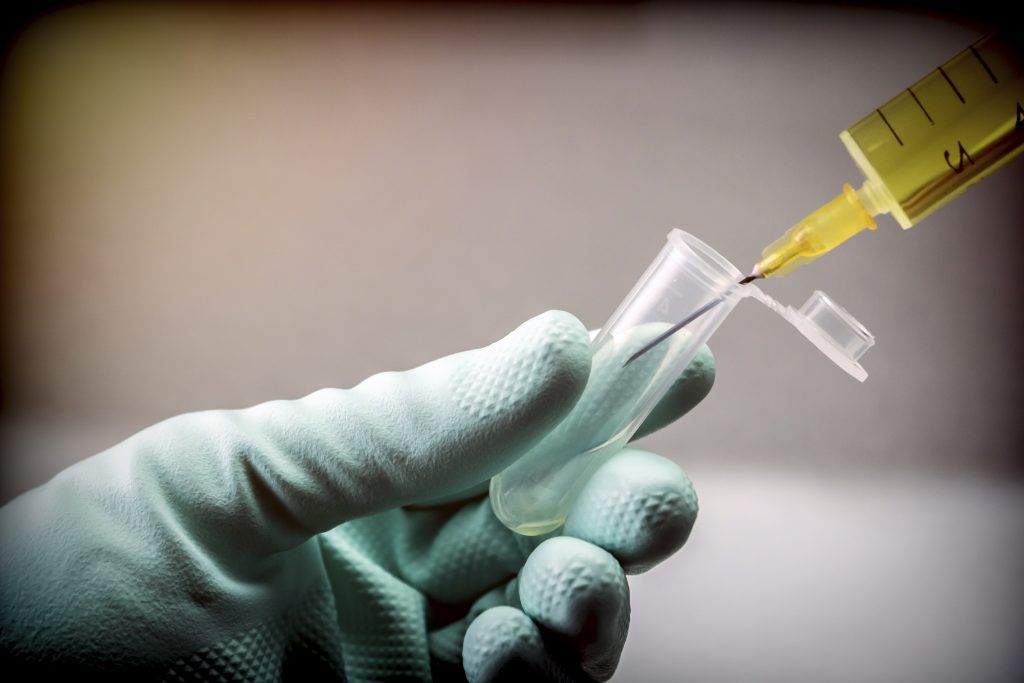Ignore Bill Gates: Where bioweapons focus really belongs
By Filippa Lentzos | July 3, 2017

Bioterrorism seems to be back in fashion. In the past, it has received bursts of attention that arose from particular incidents—the “anthrax letters” sent through the mail to US politicians and media outlets in 2001, for instance, or the purchase of plague bacteria by white supremacist Larry Wayne Harris in 1995. This time, it’s an unlikely individual calling attention to the bioterror threat—Bill Gates, the Microsoft founder turned philanthropist. Over the last several years, the world’s richest man has spent vast sums of money on global health, and in the last few months he has turned his attention to bioterrorism. At a high-profile security summit in Munich in February, he warned that bioterrorism could kill tens of millions. At a London security meeting a couple of months later, he said terrorists could wipe out 30 million people by weaponizing a disease such as smallpox.
I disagree. At a stretch, terrorists taking advantage of advances in biology might be able to create a viable pathogen. That does not mean they could create a sophisticated biological weapon, and certainly not a weapon that could kill 30 million people. Terrorists in any event tend to be conservative. They use readily available weapons that have a proven track record—not unconventional weapons that are more difficult to develop and deploy. Available evidence shows that few terrorists have ever even contemplated using biological agents, and the extremely small number of bioterrorism incidents in the historical record shows that biological agents are difficult to use as weapons. The skills required to undertake even the most basic of bioterrorism attacks are more demanding than often assumed. These technical barriers are likely to persist in the near- and medium-term future.
Gates does a disservice to the global health security community when he draws media and policy attention to amateurs such as terrorists. Where biological weapons are concerned, the focus should remain on national militaries and state-sponsored groups. These are the entities that might have the capability, now or in the near future, to develop dangerous biological weapons. The real threat is that sophisticated biological weapons will be used by state actors—or by financially, scientifically, and militarily well-resourced groups sponsored by states.
So far, state-level use of biology to deliberately inflict disease or disrupt human functions has been limited by the strong international norm against biological weapons enshrined in the 1925 Geneva Protocol and the 1972 Biological and Toxin Weapons Convention. These two biological cornerstones of the rules of war uphold the international prohibition against the development, production, stockpiling, and use of biological weapons. But this norm may not survive indefinitely.
Another factor significantly limiting the use of biological weapons is their lack of perceived military utility. In the near-to-medium term, however, advances in science and technology may enable the development of more capable and more accessible biological weapons. These weapons might allow attacks to be targeted more precisely. Attribution would become more difficult. These technical developments—paired with changes in the social context around biological weapons—may lower barriers to the development and use of biological weapons.
Technical advances. Several current advances in science and technology are particularly prone to misuse in bioweapons. For example, new developments in microbiological, immunological, and epidemiological research could lead to the production of more “useful” bioweapons. The pathogenicity or virulence of pathogens can now be increased. Immunity against pathogens can be disrupted, and resistance to prophylactic or therapeutic interventions can be conferred. The host range of a pathogen can be altered, enhancing a host population’s susceptibility to a pathogen, or increasing the stability and transmissibility of a pathogen.
Gene editing and engineering technologies form another area of concern. These technologies could, for instance, enable the construction of dangerous pathogens from scratch, assist in the design of modified or radically new pathogens, or permit the reconstitution of an eradicated or extinct pathogen. Pharmacogenomics and genomic biomarker research could tailor drug responses to particular genetic groups, and might enable selective and more precisely targeted “genetic weapons.” Neurobiological research could enable the precise manipulation of bioregulators such as hormones, neurotransmitters, or signalling factors, which would then function as biological weapons controlling vital homeostatic systems such as temperature, sleep, blood pressure, heart rate, and immune response. Finally, new technologies could improve the yield, speed, or availability of bioweapons production; enhance the capabilities of sprayers or drone swarms; facilitate the use of non-living vectors such as nanomaterials; enhance delivery platforms for getting pathogens, molecules and drugs into the body; and advance self-assembled nanodevices and DNA origami (that is, complex nanostructures created by folding DNA) with the potential to transport biomolecules to targets within the body.
Changing social context. At the same time, a number of factors are converging to lower barriers to biological weapon development and use. First is the shifting geopolitical environment. Over the last quarter-century, the United States has clearly been the world’s dominant power. Now the unipolar global power structure is evolving into an increasingly multipolar international system. The most clearly rising power today is China, but there are others: India and Brazil, to name two. In this new world order, contemporary norms, international structures, and enforcement mechanisms largely shaped by Washington are likely to change, and treaties such as the Geneva Protocol and the Biological and Toxin Weapons Convention may start to lose their significance.
A second factor lowering barriers is the evolving nature of conflict and warfare. The character of military challenges that confront states is changing. Hybrid warfare—which blends conventional warfare with subversive, irregular warfare and cyber warfare—is increasingly likely to complement classic military confrontation. Under these conditions, with uncertainty and insecurity growing, some states may develop novel bioweapons for covert use in small-scale operations; in such instances, it would be hard to confirm or attribute use of biological weapons. Likewise, states may develop novel biological weapons for overt use against unprepared adversaries when they become involved in conflicts so serious that the advantages of using banned biological weapons are perceived to outweigh the political costs and military risks of resorting to proscribed weapons. Also, states outmatched by adversaries in conventional weaponry might see novel bioweapons as a way to gain asymmetric advantages and compensate for strategic imbalances.
How to defend? Because of the changing technical and social contexts around biological weapons today, the risk is very real that barriers to biological weapon development and use will be lowered. The international community must respond to this threat decisively.
First, the Biological and Toxin Weapons Convention must be modernized and its growing irrelevance countered. The treaty was agreed in 1972, deep in the Cold War; its relevance for the 21st century now must be assured. The norm against biological weapons embodied within the treaty is exceptionally strong. No state openly admits to pursuing a bioweapons capacity, and membership in the treaty continues to grow. But while the treaty is not failing, it is not flourishing either, and it needs strengthening.
Second, any breaches in the norm against biological weapons, or any actual use of biological weapons, must be met with a collective and convincing response. The continual use of chemical weapons in Syria has had a deteriorating effect on the norm against the use of those weapons. The international community must redouble its efforts to ensure that the same thing does not happen with biological weapons. Likewise, the international community must increase its capacity to investigate allegations of use. If methods for attributing or confirming who was behind an attack are enhanced, the operational advantages of “stealth” biological weapons may be reduced.
Finally, national biodefense capacities must be developed. If good ways of defending against future biological weapons existed, these weapons would become less attractive. But biodefense efforts must be transparent—it is in biodefense that the potential is greatest for permitted activities to cross the line, inadvertently or intentionally, into prohibited activities. States with biodefense programs, therefore, have a special responsibility to demonstrate that their programs are not used as cover for offensive programs—and also to ensure that their programs are not perceived as cover for anything offensive, as this might provide other states with a justification for initiating or continuing their own offensive warfare programs.
States with biodefense programs must therefore:
- Ensure that their biodefense activities are subject to stringent biosafety and biosecurity regulations, enshrined in national law.
- Enact national legislation implementing the Biological and Toxin Weapons Convention.
- Ensure via regular review that their biodefense activities are in compliance with the convention.
- Annually declare their biodefense programs in confidence-building submissions to the convention, and also increase transparency by participating in interactive information exchanges such as on-site peer review exercises with other states.
Bill Gates means well. But the right intentions and a lot of money don’t necessarily make people safer from bioweapons. Indeed, amid the very real bioweapons dangers that may emerge in the coming years, drawing attention to misplaced concerns about bioweapons in the hands of terrorists may only make the world less secure.
Together, we make the world safer.
The Bulletin elevates expert voices above the noise. But as an independent nonprofit organization, our operations depend on the support of readers like you. Help us continue to deliver quality journalism that holds leaders accountable. Your support of our work at any level is important. In return, we promise our coverage will be understandable, influential, vigilant, solution-oriented, and fair-minded. Together we can make a difference.
Topics: Analysis, Biosecurity















